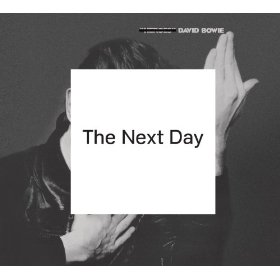
Columbia
If you are one of those David Bowie fans who doesn’t listen to anything after the Berlin trilogy, then you have no right calling yourself a Bowie fan.
While I cannot bring myself to endorse the likes of such mid-80s travesties as Tonight and Never Let Me Down, for the most part the Thin White Duke’s post- Let’s Dance output has been largely underappreciated and misunderstood, from his 1989 hard rock outfit Tin Machine to 1995’s Fincher-esque industrial crime novel Outside to his outstanding and overlooked excursion into Drum ‘n Bass with 1997’s Earthling.
And though it has been a solid decade since Bowie has released his last proper LP, it seems that most critics must have automatically tossed his two previous outings, 2001’s Heathen and 2003’s Reality, in the giveaway bin too soon given the way by which they are reacting to The Next Day. Yes, there is cause to celebrate its arrival after the English rock icon, following his 2004 heart attack, has kept an incredibly low profile over the last ten years—especially from the studio—giving many fans the impression he had retired from the world stage for good.
But upon listening to these fourteen new songs, you’d be left to wonder if any time had passed at all, as The Next Day is largely a continuance of the neo-classicist sound he was mining with its prior pair of predecessors, not to mention 1999’s Hours.., as Zig and a roundtable of longtime associates—including producer Tony Visconti, bassists Gail Ann Dorsey and Tony Levin, guitarists Earl Slick and David Torn and drummer Sterling Campbell among others—bring the brew still simmering from Heathen and Reality to its full rapid boil, fusing together the jagged guitars of the first Tin Machine album and the contemplative darkness of the very record this new album sends up—1977’s Heroes —to create what can easily be called one of the five best Bowie records out there.
The thing is, to truly appreciate The Next Day, you ought to revisit the five LPs that came before it.



No Comments comments associated with this post